Experts reveal the trick that will save you money when washing your clothes
If you’re looking to save some cash, this is a trick well worth knowing
You know that Mode dial atop your camera that’s always staring you in the face? The first thing you should understand is that the various options available don’t fall into the set-it-and-forget category of configuring a camera.
In this quick video from the Photo Genius YouTube channel you’ll learn which mode works best depending upon the task as hand. When shooting sports/action photos, for example, Shutter Priority often provides optimum control for best results. When photographing landscape however, when depth of field is a primary concern, Aperture Priority is a better choice.
And other times you may want to bite the bullet and use Manual mode to achieve the best results possible (and that’s far easier to do than you may think). Instructor Paul Farris is known for straightforward tutorials designed for beginners and amateurs alike, and he always includes important tips that can be valuable to more experienced shooters.
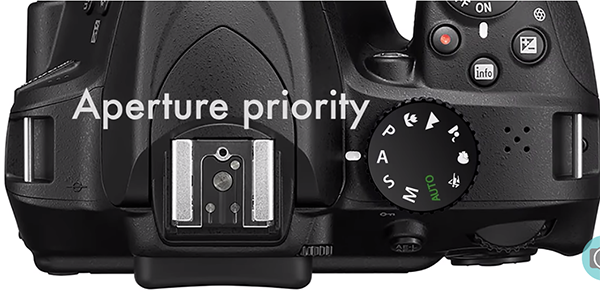
Farris uses cameras from Canon, Nikon, and Fujifilm to demonstrate the various modes, but everything you’ll learn applies equally to whatever brand you own, as long as it features Manual control. Farris begins with the Auto mode, which is typically the default factory setting. It’s often used by beginners because the camera does all the work for you. The downside here is that creative control is virtually non-existent.
Most cameras also offer a variety of Scene modes in which the camera configures settings for subjects like portraits, landscapes, macro, sports, and night photography. But just like with Auto, you have no control over the how the settings are implemented.
What Farris say is this: “Anything the camera can do in the Auto mode you can do better by taking control of the camera and using what are often referred to as the creative modes. This enables you to get the exact results you want. These modes include Manual, Aperture Priority, Shutter Priority, and Program. It’s worth noting that the nomenclature can be different from one camera to another, whereas Aperture Priority is indicated with an “A” on some mode dials and “AV” on others.
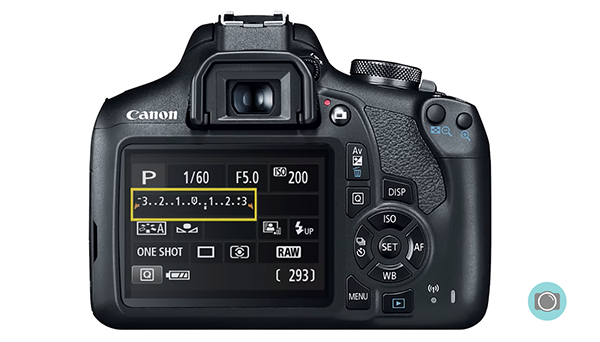
There are also a few full featured cameras with no mode dial at all, but Farris demonstrates why that’s not a problem if you operate the other physical controls properly. The remainder of the video is a detailed explanation of how all the creative modes work, and when it’s appropriate to use one versus another.
Farris sums up the episode in very emphatic terms: “The moment you get out of the Auto mode you’re going to unlock camera functions that you couldn’t use previously—like the three components of the Exposure Triangle. And by doing so your images are sure to improve.
After watching the video head over to the Photo Genius YouTube channel, where you’ll find other videos for eliminating confusion. We also recommend another simple primer we posted recently, with a beginners guide to taking beautiful photographs of birds.
It’s not uncommon to underexpose landscape photos when shooting in complicated lighting situations. This mistake can be particularly acute when the sun appears within the frame.
Fortunately there’s an easy Photoshop fix, as you’ll see in the tutorial below from the PHLOG Photography YouTube channel. You’ll learn how to make an amazing transformation, along with a few other enhancements in less than 13 minutes.
We often turn to German landscape pro Christian Mohrle for image-editing tips that anyone can master. He begins this episode with an image that’s severely underexposed, in part because of the sun on the horizon. We suggest downloading the Raw file with the link beneath the video so you can follow along and make the edits yourself as they’re explained.
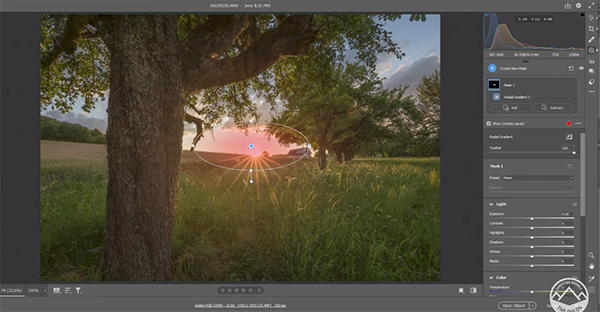
Mohrle introduces the lessen like this: “Initially I planned on merging an HDR but decided to give a single Raw file a try and it worked really well.” His restoration is accomplished in the Camera Raw editor, with some cleanup and final tweaks in Photoshop.
The process begins with a few basic adjustments to the overall image, to get it ready for what follows. Mohrle switches the Profile to Adobe Standard which slightly raises the dark portions of the shot. Then he increases exposure while bringing down highlights to prevent overexposing the sky.
Mohrle completes the preliminary enhancements by pushing the shadows for more detail and boosting contrast for more punch. He also introduces a “dreamy” effect by adding texture while reducing Clarity and Dehaze.
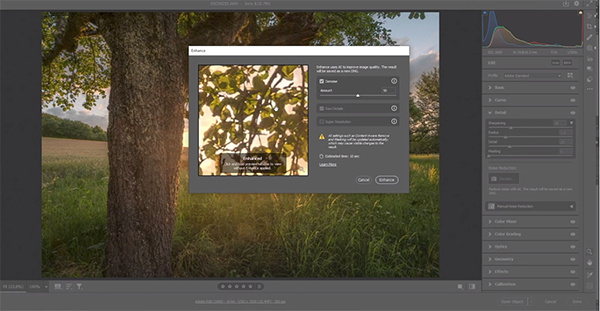
Now it’s time for selective adjustments using masks. Mohrle applies an inverted Radial Gradient over the sun to adjust the Whites, and a few Linear Gradients over the foreground —adding Contrast and Clarity to make this area look sharper. He also does this to the tree on the left side of the frame.
The masking concludes with a large Radial Gradient over the center of the image for adding some glow and a further cut to Dehaze. The color grading that follows is short and sweet. Mohrle increases blue and orange saturation and applies a split-toning effect to warm up highlights and mid-tones while cooling off the shadows.
The final step is a bit of cleanup with Photoshop’s Spot Healing Brush, careful Dodging of foreground highlights, and one more layer of glow in the middle of the frame. A quick look at the before/after images illustrates the power of this approach.
After watching the video pay a visit to Mohrle’s instructional YouTube channel where you’ll find much more of interest, especially if landscape photography is your thing.
We also recommend watching the earlier tutorial we posted from another accomplished pro, explaining why composing with symmetry in mind is a secret weapon for more captivating outdoor photographs.
It’s been said a billion times but it’s worth repeating: The best camera you’ll ever use is the one you have with you when you need it. Mirrorless marvels and DSLRs are wonderful photo-making machines, but there are times when they’re too large or heavy to be convenient—and that’s when the compact camera shines. Here’s a selection of high-performance compact cameras you can order from MPB today.
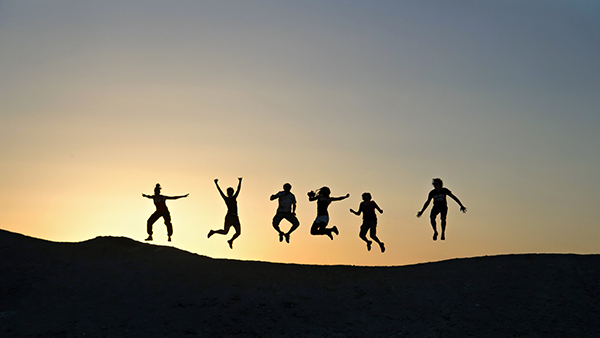
MPB, the largest global platform to buy, sell and trade used photo and video gear, has hundreds of compact cameras in stock for your selection. MPB recirculates more than 485,000 pieces of photo equipment every year, and that means you’re assured of finding the want you want. On average, used gear from MPB costs one-third less than new. Their dynamic pricing engine ensures the right price for all items.
Moreover, every camera and lens sold by MPB is thoroughly inspected by trained specialists.
All cameras and lenses undergo a thorough 8 to 10 point inspection process and are covered by a 6-month warranty. Enjoy the peace of mind that comes from knowing you won’t be left dangling after your purchase.
Make an Informed Buying Decision
Buy with confidence. The camera or lens pictured in every online listing is the actual item you receive. All included accessories are clearly listed. Plus the condition of the product is described in exacting detail based on MPB’s simple, easy to understand 5-level condition ratings:
• Like New (mint condition, only minor wear)
• Excellent (minimal signs of wear, otherwise pristine)
• Good (fair amount of use, but well-kept and may have marks or scratches)
• Well Used (significant use, noticeable signs of wear and tear)
• Heavily Used (significant signs of wear and tear, primary functions still work)

You Can Trade-in and Save
Have a lens or camera body that you no longer need or want? Trade it toward a piece of equipment that will help you reach your photographic aspirations, or sell it for cash.
Selling to MPB and/or trading in is easy. Start by getting a free instant online quote from MPB. If you like the deal, MPB pays for shipment, including the pick-up from your house.
If you’re trading in and have picked out something you want to buy, MPB freezes that item until you finalize the transaction.
Selling your gear to MPB works the same way—get an instant online quotation and enjoy free shipping. After inspection to verify condition, MPB deposits the agreed upon amount directly to your bank within about two business days. If the equipment happens to be in better condition than you described, MPB increases the payment amount. On average, customers earn $900 each time they sell to MPB.
Select Examples
Here are five examples of the fully-featured compact cameras you’ll find on MPB’s website, but there are many, many more. In fact, MPB has over 16,000 pieces of gear in the US and over 47,000 globally. MPB adds more than 2,000 products every week.
All lens focal lengths indicated below reflect the 35mm equivalent. All five models are in stock at the time this is written, but the inventory turns over extremely fast—act now.
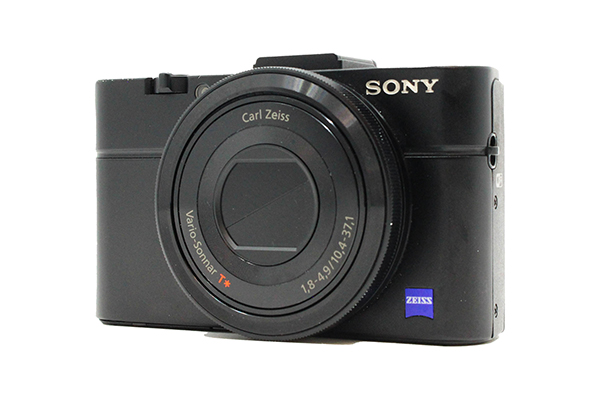
Sony Cyber-shot DSC-RX100 II
Ever since the introduction of the original Sony Cyber-shot DSC-RX100 camera way back in 2012 as a breakthrough, luxury high-end compact with a large sensor, the RX100 series has been steadily improving and growing its legions of admiring fans. The RX100 II (model II) shown here has a large 1-inch, 20.2-megapixel sensor, Carl Zeiss Vario-Sonnar T* 28-100mm f/1.8 zoom lens and a tilting 3-inch LCD. Truly pocketsize, the Sony Cyber-shot DSC-RX100 II measures 4 x 2.3 x 1.5 inches (102 x 58 x 38 mm) and weighs less than 10 ounces. It’s perfect for travel, family get-togethers and candids. Prices at MPB start at $299.
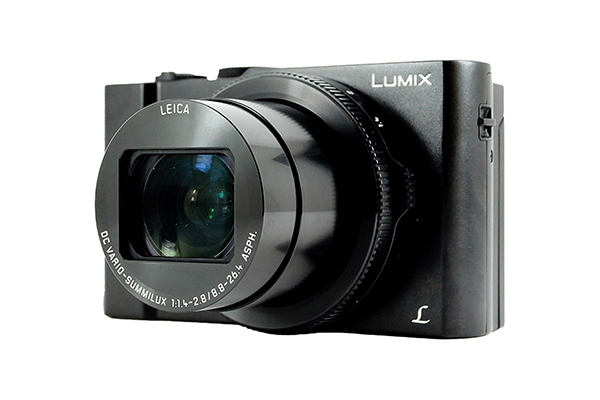
Panasonic LUMIX DMC-LX100
Featuring a Leica lens and a 16-megapixel Four Thirds CMOS sensor, the Panasonic LUMIX DMC-LX100 combines a bright LEICA DC Vario-Summilux 24-75mm f/1.7-2.8 zoom lens that’s great for low-light conditions and an XGA-resolution electronic viewfinder (EVF) plus a 3-inch LCD. Capable of capturing 4K video, the Panasonic LUMIX DMC-LX100 can also shoot at 11 frames-per-second (fps) and has abundant Wi-Fi options. Available in classic black and striking silver-color finishes, prices at MPB start at $339.
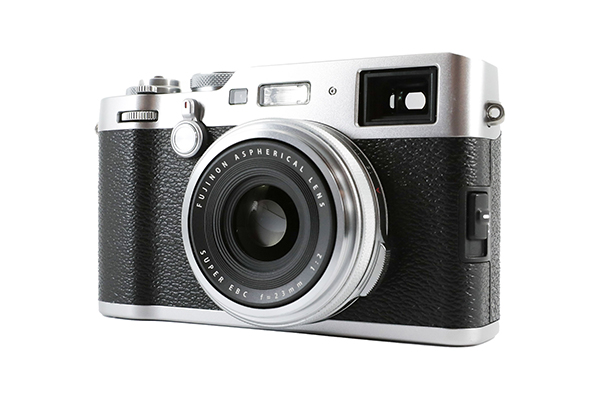
Fujifilm X100F
Whether your summer plans include skiing the Austrian Alps or simply spending some quality time with the family in the backyard, you can’t go wrong with a Fujifilm X100 series camera. Coveted for its ability to deliver “Fuji Colors” and featuring accurate emulations of famous Fuji film stocks, the Fujifilm X100F features a 24.3-megapixel APS-C X-Trans CMOS III sensor and X-Processor Pro image processor, 35mm f/2 Fujinon prime lens and beautiful retro styling that will impress your friends. Available in black or chrome finish, prices at MPB begin at $1,139.
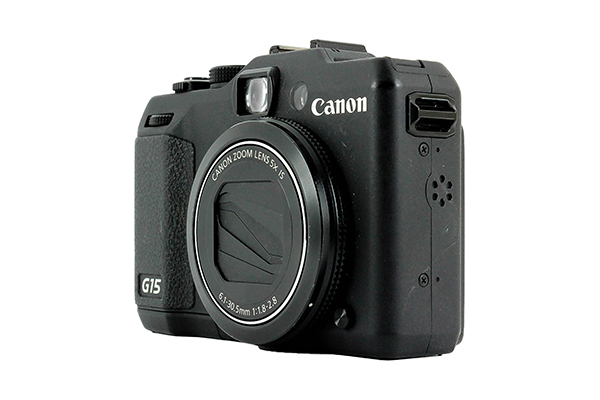
Canon PowerShot G15
Canon enjoys an envious reputation for the extremely high quality of their professional cameras. Many of the rich features and ample capabilities are present in their compact cameras as well, the PowerShot G-series in particular. Built around an Image Stabilized Canon 28-140mm f/1.8-2.8 zoom lens, the Canon PowerShot G15 offers a 12-megapixel 1/1.7-inch Canon CMOS sensor, optical viewfinder and 3-inch LCD. It’s amazingly small considering the fast and powerful zoom, and at these affordable prices, it may be the biggest bargain of all. Prices at MPB start at. $249.
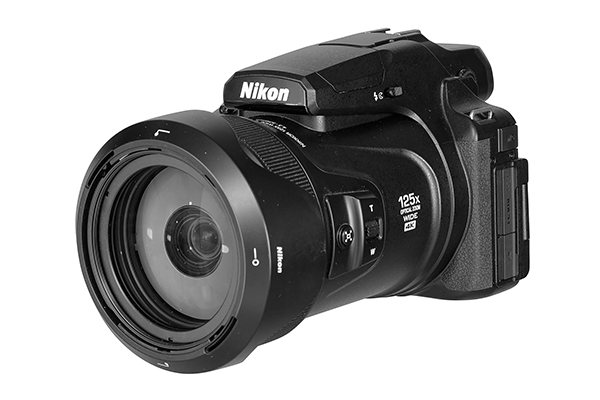
Nikon Coolpix P1000
Nikon Coolpix P1000 Superzoom camera from legendary Nikon. It features a mind-blowing 3000mm zoom (equivalent on 35mm full-frame) which is the most powerful lens found on any Nikon Coolpix camera and is perfect for sports and wildlife photography. It also offers 4K Ultra HD video, optional Raw (Nikon NRW) file format, macro, time-lapse and so much more. The NIKKOR 24-3000mm f/2.8-8 zoom heads the list of features that include a 16-megapixel BSI CMOS Sensor, OLED EVF, 3.2-inch Vari-Angle LCD Monitor and 5-stop image stabilization. Prices at MPB start at $769.
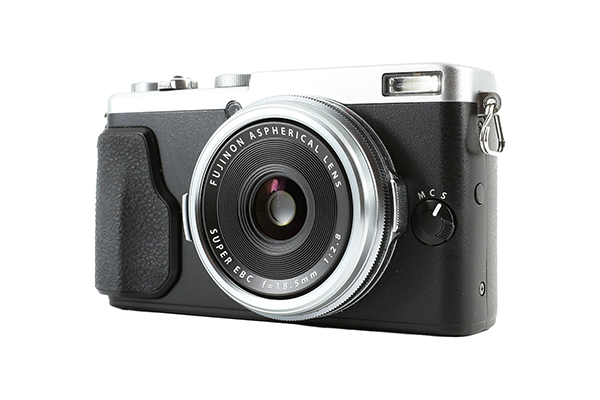
Fujifilm X70
Undisputedly a cult camera for its outstanding performance and fantastic styling, the Fujifilm X70 packs unbelievable power into its pocketable form factor. Weighing just 12 ounces (340 g) with battery and memory card, and measuring just 4.4 x 2.5 x 1.8 inches (112.5 x 64.4 x 44.4 mm), it’s a mere 1.02 inches thick (measured at its thinnest part, excluding projections). Features include a 16.3-megapixel X-Trans sensor, 28mm f/2.8 Fujinon prime lens and 3-inch tilting LCD. It also has photographer-friendly external controls for shutter speed, aperture and exposure compensation. Great for under-the-radar street photography, travel and everydaycarry. Available in black or chrome finish, prices at MPB begin at $749.
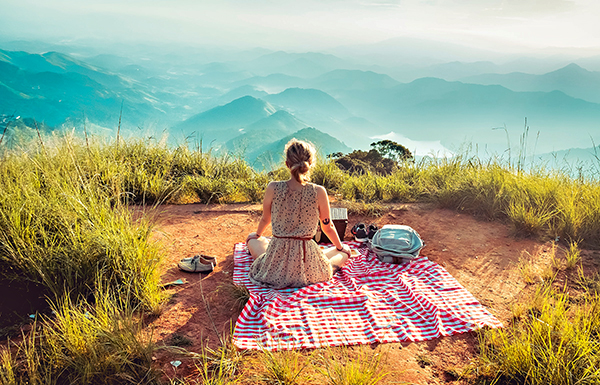
It’s Never a “One and Done” Transaction
MPB is not just a buyer and seller of photo products. MPB is a vibrant community with a base of more than 625,000 photo and video storyteller customers worldwide. MPB has earned a sterling reputation and delivers an exceptionally high level of customer satisfaction that’s reflected in their “Excellent” rating on Trustpilot where more than 27,000 people have posted their reviews.
MPB’s free-to-all website is a useful and generous resource full of original content covering multiple aspects of photography and videography. Articles include product reviews, interviews, how-to articles, pro tips, gear guides, videos, competitions and much more. MPB also delivers a newsletter that’s full of worthwhile information of interest to all photo and video storytellers.
Visit MPB Today
Whether you’re in the mood to buy, sell, trade or just browse, visit MPB today. Conveniently compare, filter and shop thousands of products. Enjoy the original content. And when it’s time to trade or sell, get an instant online quotation so you can make fully informed decisions.
∞ Shutterbug Staff
